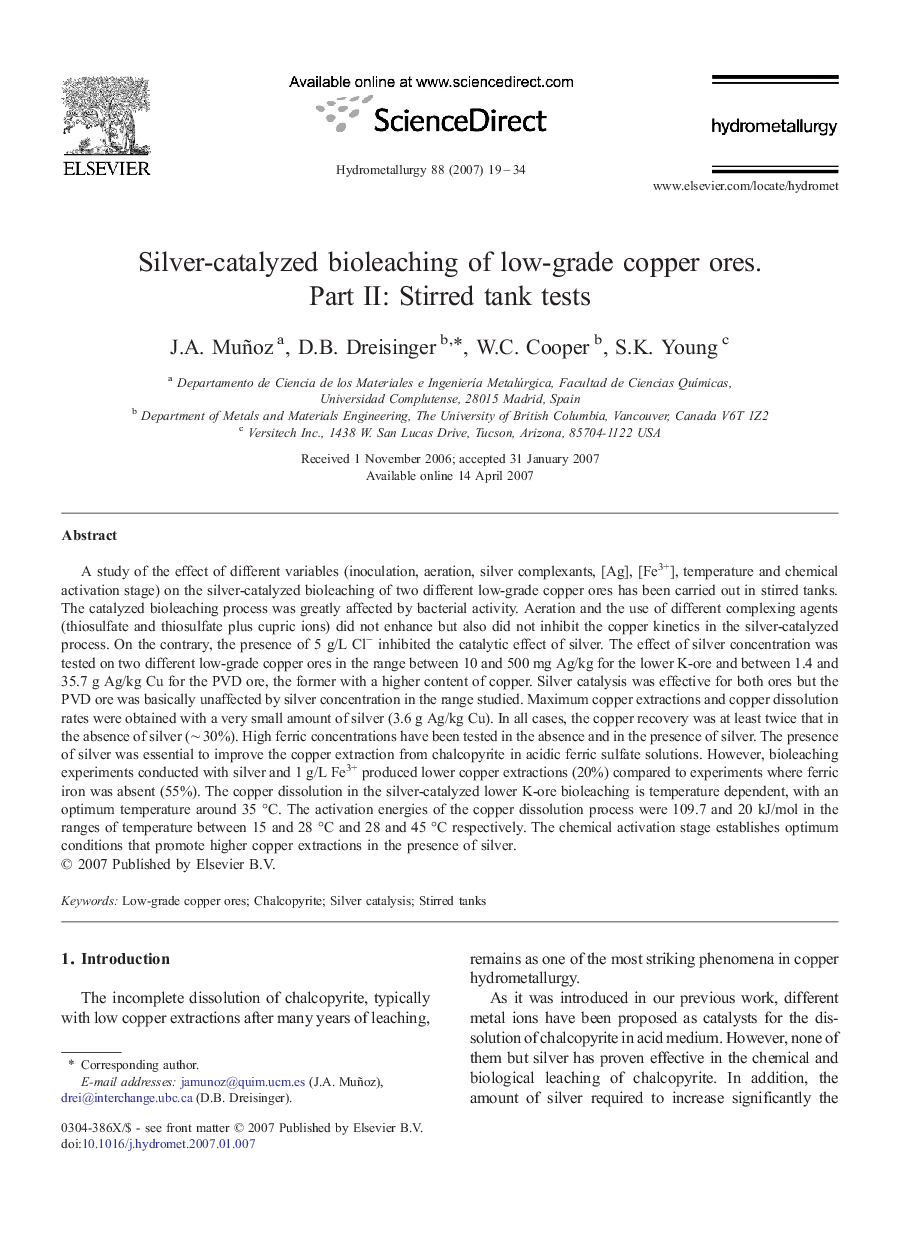| کد مقاله | کد نشریه | سال انتشار | مقاله انگلیسی | نسخه تمام متن |
|---|---|---|---|---|
| 213503 | 462105 | 2007 | 16 صفحه PDF | دانلود رایگان |

A study of the effect of different variables (inoculation, aeration, silver complexants, [Ag], [Fe3+], temperature and chemical activation stage) on the silver-catalyzed bioleaching of two different low-grade copper ores has been carried out in stirred tanks. The catalyzed bioleaching process was greatly affected by bacterial activity. Aeration and the use of different complexing agents (thiosulfate and thiosulfate plus cupric ions) did not enhance but also did not inhibit the copper kinetics in the silver-catalyzed process. On the contrary, the presence of 5 g/L Cl− inhibited the catalytic effect of silver. The effect of silver concentration was tested on two different low-grade copper ores in the range between 10 and 500 mg Ag/kg for the lower K-ore and between 1.4 and 35.7 g Ag/kg Cu for the PVD ore, the former with a higher content of copper. Silver catalysis was effective for both ores but the PVD ore was basically unaffected by silver concentration in the range studied. Maximum copper extractions and copper dissolution rates were obtained with a very small amount of silver (3.6 g Ag/kg Cu). In all cases, the copper recovery was at least twice that in the absence of silver (∼ 30%). High ferric concentrations have been tested in the absence and in the presence of silver. The presence of silver was essential to improve the copper extraction from chalcopyrite in acidic ferric sulfate solutions. However, bioleaching experiments conducted with silver and 1 g/L Fe3+ produced lower copper extractions (20%) compared to experiments where ferric iron was absent (55%). The copper dissolution in the silver-catalyzed lower K-ore bioleaching is temperature dependent, with an optimum temperature around 35 °C. The activation energies of the copper dissolution process were 109.7 and 20 kJ/mol in the ranges of temperature between 15 and 28 °C and 28 and 45 °C respectively. The chemical activation stage establishes optimum conditions that promote higher copper extractions in the presence of silver.
Journal: Hydrometallurgy - Volume 88, Issues 1–4, August 2007, Pages 19–34